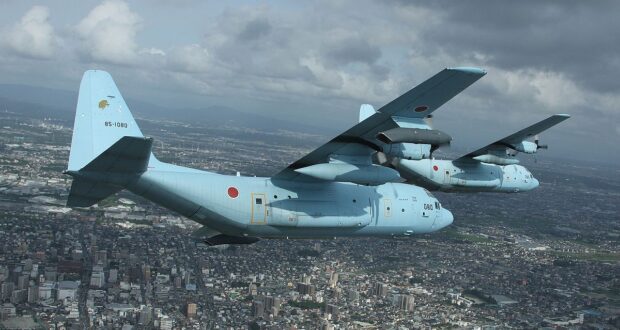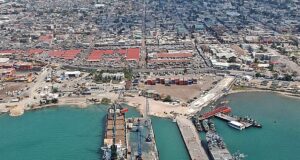6 February, 2023
By Luke Austin – Junior Fellow
Bilateral relations between Japan and Afghanistan can be traced back to 1930, when a Treaty of Amity was signed between the two states. From December 1934, Afghanistan started to purchase weapons from Japan, such as the Type 38 rifle. Following the establishment of an embassy in Kabul that same year, Japan actively used this as a cover to conduct intelligence operations targeting its adversaries the Allied powers and the Soviet Union leading up to and during the Second World War. Japan was visited by Afghan Prime Minister Mohammed Daoud Khan in 1959 and by King Zaher Shah and Queen Humaira in 1969. In 1971, then-Crown Prince Akihito and then-Crown Princess Michiko made their first visit to Afghanistan.
In response to the 11 September attacks in New York, Washington DC and Pennsylvania, Afghanistan was invaded in October 2001 by a US-led coalition following the approval of two resolutions by the United Nations Security Council (UNSC). While the Taliban regime was swiftly toppled by the end of the year, US and NATO forces soon found themselves presented with the challenges of reconstructing an entire state. The Taliban initiated an insurgency against the new Afghan government and foreign forces, with the backing of Pakistan. In addition to the profound socio-cultural divisions in the country, three additional challenges posed to the state-building process in Afghanistan were succinctly highlighted by one expert: “the fragmentation and corruption of the governing elite, the flawed strategy of the US and its NATO allies in dealing with Afghanistan’s problems, and the strengthening of counter-systemic actors”.
Japan’s involvement in Afghanistan has been shaped to a considerable extent by the US-Japan Security Alliance. In a break from Japan’s post-war Yoshida doctrine, which emphasises specifically economic development, then-Prime Minister Junichiro Koizumi sought to entwine Japan’s security architecture with that of the US, with major changes following the 11 September attacks being reflected in the passing of the very legislation allowing the dispatch of Self-Defence Forces (SDF) personnel from Japan to the Indian Ocean to assist US-led military operations in Afghanistan and Iraq as well as the acquirement of advanced US-developed missile defence systems by Japan. It is also influenced by domestic factors. Changes in government towards the late 2000s caused Japan to withdraw its navy from supply missions assisting the American, British and other navies in the Indian Ocean in 2007 only for these forces to return later. October 2011 marked a turning point with the passing of an Antiterrorism bill in Japan: this allowed the dispatch of SDF personnel to the Indian Ocean amid an ongoing military operation. This signalled a major deviation from the 1992 Peacekeeping Operation (PKO) law, which only provided for the dispatch of SDF personnel to conflict zones where military operations had already terminated. Its participation in counter-terrorism activities, albeit of a purely logistical nature, is somewhat surprising given constitutional restraints on the SDF. These constitutional restraints prevented the very deployment of SDF personnel to Afghanistan itself.
However, camaraderie with the US is not exactly the major incentive for Japan’s involvement in Afghanistan. There are additional factors involved, both material and normative in their respective nature. From a constructivist perspective, which emphasises the normative elements of Japan’s Afghanistan policy, contradictory and juxtaposing sets of norms seem to have been bolstered by Japan’s behaviour. On one hand, the very fact that the SDF were involved in what was an operation of a decidedly military and security nature reflects a shift towards those norms espoused by the right-wing of Japanese politics, which range from militarism to explicit nationalism. At least, this appears to be the case on the surface. The reactions expressed by Asian states who experienced Japanese military aggression during the Second World War to actions and policies promoting such norms in Japan are directly linked to their respective historical memories, and in turn influences their interactions with Japan in the present day- this dynamic has been referred to by some as the ‘history spiral’. This has been demonstrated time and time again, as evidenced in South Korea’s trade dispute with Japan, Japan’s territorial disputes with the People’s Republic of China (PRC) and South Korea over the Senkaku-Diaoyu and Takeshima-Dokto island groups, besides the more general concerns expressed by Japan’s neighbours with regards to its development of military capabilities. Furthermore, the perceived inadequacy of Japan’s purely financial contributions made to the efforts of the US-led coalition during the First Gulf War of 1991, jokingly referred to by many abroad as “chequebook diplomacy”, left a sour taste among many in Japan which would still be felt at the time of the US-led invasion of Afghanistan a decade later, prompting Koizumi’s government to consider a more conspicuous approach.
On the other hand, an explanation of the more specific nature of Japan’s involvement in Afghanistan reveals that less controversial norms pertaining to its post-war legacy as a pacifist state are, if anything, more directly tied to the course of action which it has decided to take from 2001. Japan’s involvement in Afghanistan was largely humanitarian in its outlook and execution. Furthermore, with the absence of Japanese military personnel on the ground, NATO’s Provincial Reconstruction Teams (PRTs) incorporated a limited number of Japanese civilians. Japan was not directly involved in combat operations on the ground, unlike the US, the UK, France or even Germany which is itself regarded as an economic power whose military capabilities have been greatly restrained as a result of its own historical legacy stemming from the Second World War and then reunification. Despite such constraints, Germany was involved in several combat operations, perhaps to the greatest degree in Operation Halmazag, which was executed in Kunduz province in late 2010. Whilst not being directly involved in a military sense, in 2011 Japan ranked as Afghanistan’s second-largest aid donor after the US. The ground-breaking International Conference on Reconstruction Assistance to Afghanistan (ICRAA) of January 2002, a result of which international donors pledged almost $5 billion US dollars’ worth of aid to Afghanistan, was held in Tokyo. Japan has also helped fund the Afghan police to assist with the modernisation of their equipment and improvement of their counter-narcotics training. It is hardly surprising that much of Japan’s involvement in Afghanistan is reflected in the actions of civilian government organs such as the Japan International Cooperation Agency (JICA). JICA has implemented at least nine different projects in Afghanistan, ranging from improvement of literacy to rice-based agriculture development as well as infrastructural development in Kabul. NGOs based in Japan have also played a key role in attempts to restore state capacity in Afghanistan,. These range from the Association for Aid and Relief, Japan (AAR) which has participated in mine risk education and mine-clearance activities to the Peace Japan Medical Services (PMS) or Peshawaru-kai, which was involved in food distribution, irrigation projects, medical care provision and several other activities. The head of the PMS, Dr Tetsu Nakamura, was in fact shot dead along with five others in Jalalabad in December 2019 and posthumously awarded the Order of the Rising Sun. Another Japanese national, aid worker Kazuya Ito, was killed following a kidnapping over a decade earlier in August 2008.
Biden’s withdrawal of US forces from Afghanistan has sent shockwaves through the international community. Emboldened by the greatly reduced opposition, the Taliban were able to retake virtually the entire country by August 2021, with the new government subsequently acting against the civil and political rights of women, ethnic minorities and so on. Human rights abuses in Afghanistan have raised questions over the suitability of mechanisms enacted with the intention of improving the situation in the country prior to the Taliban takeover, with the UN Assistance Mission in Afghanistan (UNAMA) being particularly criticised despite having its mandate extended by the UNSC regardless in March 2022.
What might be the implications of this move for Japan? The Japanese government faced immediate criticism for what was perceived as an ineffective and largely botched evacuation attempt of diplomatic staff and other personnel from Afghan territory: while Japanese embassy staff, JICA personnel and other Japanese nationals were successfully evacuated, Afghan citizens who had been employed by Japanese authorities had been largely left behind along with their families. What is particularly bizarre is that one C-130 aircraft intended for evacuation arrived in Japan with only one passenger. It has already become clear, however, that Japan could learn important lessons from its mistakes. At a parliamentary meeting in December 2021, Kishida responded to questions from his party’s policy chief Sanae Takaichi by briefly outlining potential improvements to SDF emergency evacuation procedures in the future.
It has been argued that the Afghanistan withdrawal in fact benefits US allies in Asia from a strategic perspective. A Taliban-controlled state near the PRC is worrying on the basis that such a state could prove to be an ideal location for launching attacks in the PRC’s own territories, especially Xinjiang. Furthermore, certain states such as Japan clearly favour and welcome a reorientation of US forces towards the Indo-Pacific region to counter an increasingly aggressive PRC. After all, the decision made by the Obama administration in the early 2010s to gradually withdraw US forces from Afghanistan has been linked to developments in Syria and Ukraine as well as concerns expressed by US allies such as Japan and South Korea over the extent to which the US would be willing to support them in times of need. Kishida’s first visit to Washington D.C. as prime minister and his meeting with Biden on 13 January underscore significant shifts in the US-Japan Security Alliance and wider Japanese foreign policy, especially far-reaching changes to its National Security Strategy (NSS) and increased defence expenditure. While some may assume that the withdrawal of the US and NATO from Afghanistan may benefit the PRC, evidence to the contrary continues to mount. The PRC’s approach to the regime changes in both Afghanistan and Myanmar which have both occurred in the space of a single year has been contradictory to its own foreign policy principles such as a supposedly Neo-Westphalian “non-interference”, as it continues to timidly yet nevertheless openly engage with both regimes and ultimately leading to a loss of its integrity in the eyes of the wider international community.
It appears that Japan, however, has already taken steps to resume bilateral relations with Afghanistan, even with the latter being ruled by the Taliban. Japanese ambassador to Afghanistan Takashi Okada met with Afghanistan’s acting Interior Minister Sirajuddin Haqqani on 23 October 2022 following the partial reopening of Japan’s embassy in Kabul the previous month. Although Japan does not recognise the Taliban government, it has been reported that Japan intends to continue increasing its aid to Afghanistan, with the Kabul embassy’s reopening considered a first step towards this goal. Japan also continues its Afghanistan policy on the multilateral level with the US. For example, US Special Representative for Afghanistan Thomas West made a visit to Tokyo at the beginning of December 2022: according to Tweets made by his official Twitter account, West discussed humanitarian issues in Afghanistan with MOFA representatives including former UN Secretary-General Special Representative for Afghanistan and UNAMA chief Tadamichi Yamamoto, as well as economic strategies with JICA officials. While increasing tensions in the Indo-Pacific stemming from fears over the PRC’s increasingly threatening posture towards Taiwan, the global economic disorder generated by Russia’s February 2022 invasion of Ukraine and approval ratings plummeting for the Kishida administration may preoccupy the Japanese government for the time being, it is highly likely that Japan’s Afghanistan policy will be of largely economic, and less geopolitical nature.
Image: a pair of Japanese Air Self Defence Force (JASDF) C-130H transport aircraft – a type used in to evacuate Japanese civilians in 2021. Afghanistan (Source: 航空自衛隊/MoD of Japan/Wikimedia via Government of Japan Standard Terms of Use (Ver.2.0))
 Human Security Centre Human Rights and International Security Research
Human Security Centre Human Rights and International Security Research




